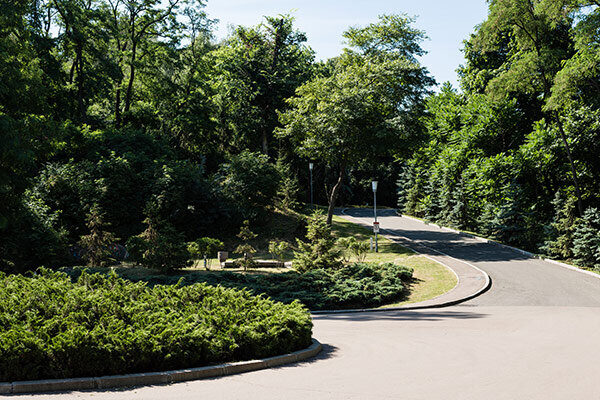Best Trees for Urban Areas
It can be difficult to plant trees in urban areas or “street trees” as some people call them. Why? The truth is that pollution from roads, the sometimes rough handling of cars and people, and just the lack of greenery around are things that other trees cannot handle. Sure, some trees might be able to grow, but they will not be able to thrive in an environment where they have concrete.
It’s important to plant trees in urban areas, where they provide oxygen, shade, habitat and more. According to the Environmental Protection Agency, a large urban tree can provide as much as 10 to 20 times as much of an ecological benefit as a large forest tree.
Trees, of any kind, trap or absorb particle pollution, carbon dioxide, and other greenhouse gases that can fill the air – especially in cities. They also generate oxygen and help to cool the air, reducing the urban heat island effect that makes so many cities humid in the summertime. They also reduce runoff, which spreads chemicals.
So, which trees thrive best next to streets, highways, shopping centers, or even just your driveway? Here are our choices:
European Hornbeam
- Shade and moisture tolerant
- Smaller trees, perfect for yards of all sizes
- Attractive bark
One of the things people notice about trees in our area is that they ought to be pretty without their leaves, which is why the European Hornbeam is so popular. This tree is small but mighty, with really interesting bark and great leaves. Truly, there is just something special about this tree.
ThoughtCo explains it all: “The smooth, gray, rippling bark of Carpinus betulus shields the extremely hard, strong wood. Fastigiata European hornbeam, the most common hornbeam cultivar sold, grows 30 to 40 feet tall and 20 to 30 feet wide. A very densely-foliated, columnar or oval-shaped tree making it ideal for use as a hedge, screen, or windbreak. The European hornbeam is usually preferred over American hornbeam as it grows faster with a uniform shape.”
If you are looking for something to fill up your street-side yard now, this is the best option.
Black Gum Tree
- Slow growing
- Beautiful red foliage in the fall
- No serious diseases
The Black Gum tree is another tree that you may want to plant near the road if you have the space. You may want to be careful as it can sometimes grow over 100 feet, but most will grow between 30 to 60 feet tall and spread 20 to 40 feet wide, according to Cornell. This tree is quite popular because it is a pyramid shape, which is very pleasing to the eye. It is not ornamental at all and fairly inconspicuous, meaning that you won’t have to worry about cleanup at all.
The tree itself has a glossy green color in the summer and tends to change into beautiful colors in the fall, namely red, orange, yellow, or even purple. The bark is often silvery and almost black, which attracts quite a bit of attention. It is also textured, which attracts attention.
The older the tree, the more likely it is to produce fruits that can sometimes stain the sidewalk, so you may want to be careful there. Typically, however, they are just a beautiful tree.
Northern Red Oak
- Grows in poorly drained areas
- Grows quickly or slowly, depending on conditions
- Grows to 60′ to 75′, 45′ spread
One of the most classic trees to find by the street is the Northern Red Oak. This hardy tree is absolutely gorgeous and found in some of the biggest cities in the world. If it can deal with the pollution, salt, and general wear and tear that comes with those cities, it can certainly deal with what comes from ours.
According to Casey Trees, “The northern red oak displays a rich red color in the fall, right. Strong-limbed, it is an excellent street tree that can tolerate difficult urban conditions. In the fall the leaves turn to a distinctive bright brick red. You can find red oaks in a lot of places in D.C. including McPherson Square, Cleveland Park, Dumbarton Oaks, Logan Circle and Woodland-Normanstone.”
Japanese Tree Lilac
- Absolutely beautiful
- Quite hardy
- Tends to be better in colder environments
First cultivated in 1856, the Japanese tree lilac is a smaller tree that is native to northern Japan, but it grows really well almost all over the world. It is the only one in its family that looks like a tree and grows like one as well. This means that it does need some pruning.
However, it is absolutely graceful and has branches that are well spread out to reveal an oval grown. Without pruning, it will resemble more of a large shrub. Still, they can grow 20 to 30 feet tall with a spread of 15 to 25 feet, according to Bernheim Arboretum.
The leaves a simple, but they are slightly fuzzy which can give your yard some great texture. They turn brown before dropping in the fall. The main show is really in the spring when they get white flowers that are somewhat fragrant but absolutely beautiful. It is best if you plant them in groups or at least with a few other friends because they are pollinated by insects, so you will get the best show come the spring months.
One word of note is to be careful where you buy them – go somewhere trusted like Wenke or another local shop.
If you believe that you have a problem with your trees or in your yard, give us a call today at (269) 216-6811 and we can set up a time to visit you and your beautiful trees to see just what the problem is – and how we can help you. There is no job too big or too small – contact our professionals today!


